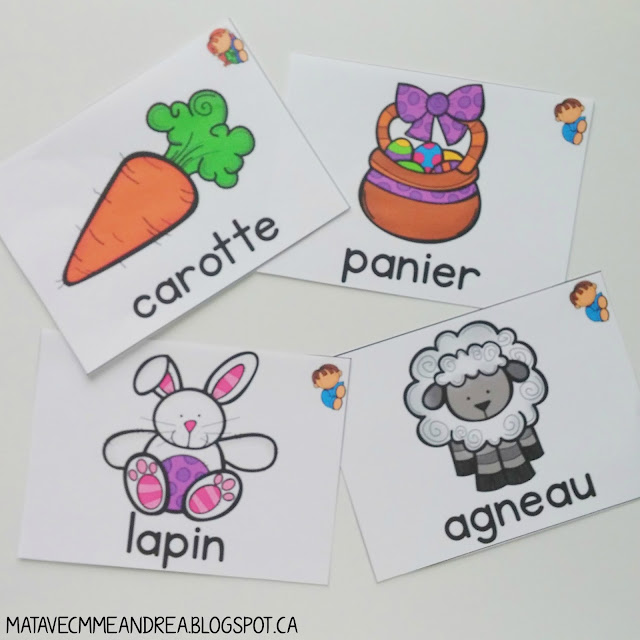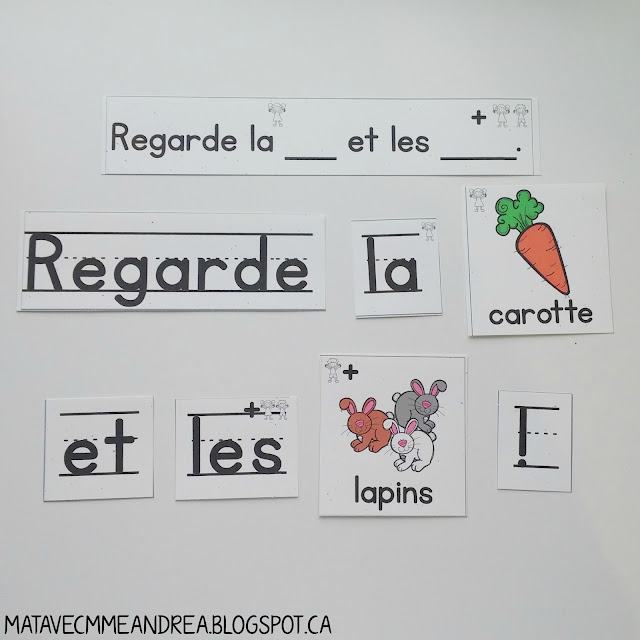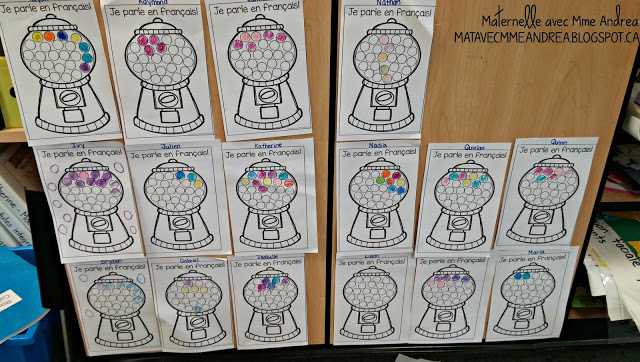Hi guys!
I was evaluating my students last week on oral communication for their report cards – specifically about whether or not they use new vocabulary and expressions in both structured and spontaneous situations. I thought that sharing some of the strategies I use every day to help them assimilate new vocabulary may be useful to my fellow second-language teachers!
(Although technically I teach at a French first-language school…but let’s be real, expectations are often far different from reality ;). Plus, even first-language students should be learning and using new words and expressions!)
So, without further ado, here are five ways to help your second-language students assimilate new vocabulary!
1. Teach new vocabulary and expressions explicitly.
Don’t just expect your students to pick up on what you or others are saying, and what they read in books. If you want them to use new words and expressions, it is important that you specifically tell them your expectations and take time out of your day to TEACH these words and expressions. I have an oral communication block built into my day, and try to spend 20-30 minutes per day just on teaching and practicing new words, and giving my students time to practice them (see number 4). I start this on the first day of school when I teach my students how to answer the question “comment ça va?” Every morning we all answer that question (and listen to our classmates’ answers!), and we build on our answers all year long.
How do I explicitly teach these words? Lots of ways! While I don’t specifically teach curriculum via themes, I do often have themes that fit what is going on in the year woven throughout our day. For example, Easter was a few weeks ago. Easter is a big deal to kids – I want them to be able to talk about their excitement and experiences with their peers. So, our poem of the week was about Easter.
Our predictable sentences were about Easter.
The books I read in order to cover reading outcomes were about Easter. Our Write the Room centre was about Easter. Our word wall had Easter words. Our sight word practice included Easter pictures. In the morning, before an Easter activity, before we read a story, etc., we reviewed and practiced important Easter vocabulary. I tell my students that I expect them to use those words when speaking with their peers. Then, all day long, my kids are given chances to USE those words. Which brings me to number 2!
2. Give your students opportunity to use their new words all day long!
By saturating my classroom and our day with vocabulary-enriching activities, I ensure that my students are thinking about and using new vocabulary all throughout the day. Two kids doing Write the Room together say things like “As-tu trouvé le panier? Où se trouve le poussin?” During our predictable sentences centre, students are reading and saying out loud the words we have been practicing.
 |
| Check out the range of difficulty in our Spring predictable sentences words! |
We sing songs and recite and memorize poems, we do partner shares, discussions, and talking circles about our Easter traditions and our favourite things about Easter. Now, I don’t mean that I stand in front of the class and choose the same four or five students over and over. It is important that EVERYONE talks. My students are used to sitting with a partner and doing “turn and talk” or “turn and listen” when I ask a question or ask them to share a story. The expectation is that everyone answers and everyone listens to their partner. I ensure that they listen by asking a few of my students to share what their partner said after everyone has had time to talk ;)
We are also used to sitting in a circle with a talking stick (we actually use a talking cube now because I lost the stick and happened to be teaching 3D solids…guess what though? Now ALL my students can identify cubes en français haha), where everyone has chance to speak and everyone listens to their peers. In September, I asked questions with one to two word answers, but now my students share in sentences and paragraphs!
If you are looking for an activity to get your circles started, Michelle Dupuis has one on TPT that we LOVE called Le pot qui parle.
 |
| We even integrate new vocabulary into our math journals! |
Another trick you can do is give your students structured free play time. For example, when we were learning parts of the body, I did not have predictable centres, write the room, etc., for those. However, we worked together to “discover” the names of key human and animal body parts. Students started in groups of three or four and drew or wrote all the body parts they could already name in French. I used some Creative Clips clip art to create posters that we then labelled together.
If no one knew the name of a certain body part, I guided them to a levelled reader (GB+ has some great ones for animal body parts, such as « Je fais un oiseau » and « Je fais un lapin ») or we asked someone else in the school. We also learned a few songs about body parts, and once we had a pretty good grasp, we had some structured free play. I invited my students to bring a doll and/or a stuffed animal to school two days in a row, and we played doctor and/or veterinarian.
Students could also act out animals or people, as long as they were speaking characters. I walked around the room with my clip board and noted who was using our new body parts words, as well as the complexity of the words they were using. Now, for their report cards, I know exactly who has mastered basic words like « tête » and « queue », and who took risks and tried out more complex words like « orteils » and « gueule ». Which brings me to number 3…
3. Choose words to teach that give everyone something to learn
In other words, differentiate! In a perfect world, your students would come to school with all of the same experiences and knowing all the same things. But…they don’t! It is important that you are introducing and teaching words that will benefit ALL of your learners. Will all of my students be able to remember and use « arrosoir » when we finish up with our spring predictable sentences? Nope! But we have been practicing a range of easy, medium, and difficult words, and each student will have learned something new at the end of each unit – be it « lapin », « panier », or « agneau ». When my students are doing independent practice, they tend to gravitate towards words that fit where they are at, which is perfect! I also make a point to choose a range of vocabulary words for our thematic word wall cards, bingo games, etc.
 |
| These word wall cards are from my Collection Mur de mots – Pâques resource |
 |
| Examples of words used in my Earth Day Bingo |
4. Don’t “dumb-down” or change the vocabulary in your read-alouds
When your students become independent readers, they will come across lots of new words. Reading is a great way to build vocabulary! However, if you change the complex words in the books you read aloud to simpler words, your students won’t learn as much new vocabulary. It is important to choose read-alouds that aren’t above your students’ comprehension level, of course, but a good read-aloud should also contain some new vocabulary. Instead of changing it, use it! Teach your students to infer meaning based on context clues and what they already know. Inferring is a skill that your students will have to master in order to become successful readers, so use your read-alouds to model and explicitly teach your students how to do it!
 |
| A different kind of inferring, but same idea – get your students to use what they know to make a smart guess about what something means and draw/write about it |
5. Encourage and reward your students for taking risks and using new words
Encourage, encourage, encourage, and reward, reward, reward! I am not saying you should give them a prize or throw them a party every time they use a new word, but if you get excited about students taking risks, they will get excited, too – and excitement is contagious! ;)
As you may have read in this post, I use gum balls when my students speak in French. If I catch them speaking in French, they colour a gum ball, and when their card is full, they get to play on the computer during centre time (I am all about free, effortless prizes, ha!). If someone uses a new target word or phrase, I usually get really excited and tell them to colour two or even three gum balls! Then everyone else tries using those words, too. Kids LOVE recognition – use it to your advantage! Concentrating on the positives and getting excited about my students taking risks has worked really well for me in my classroom. Eventually, the things that you get excited about and positively reinforce will become good habits!
I hope this post has helped you think of a few things you can do in your classroom right away to help your students assimilate new vocabulary! If you try one thing from this post, I would LOVE to hear about it below! Or, you can leave me a comment on my Facebook page or Instagram. :) Stay connected – I love hearing from you!











